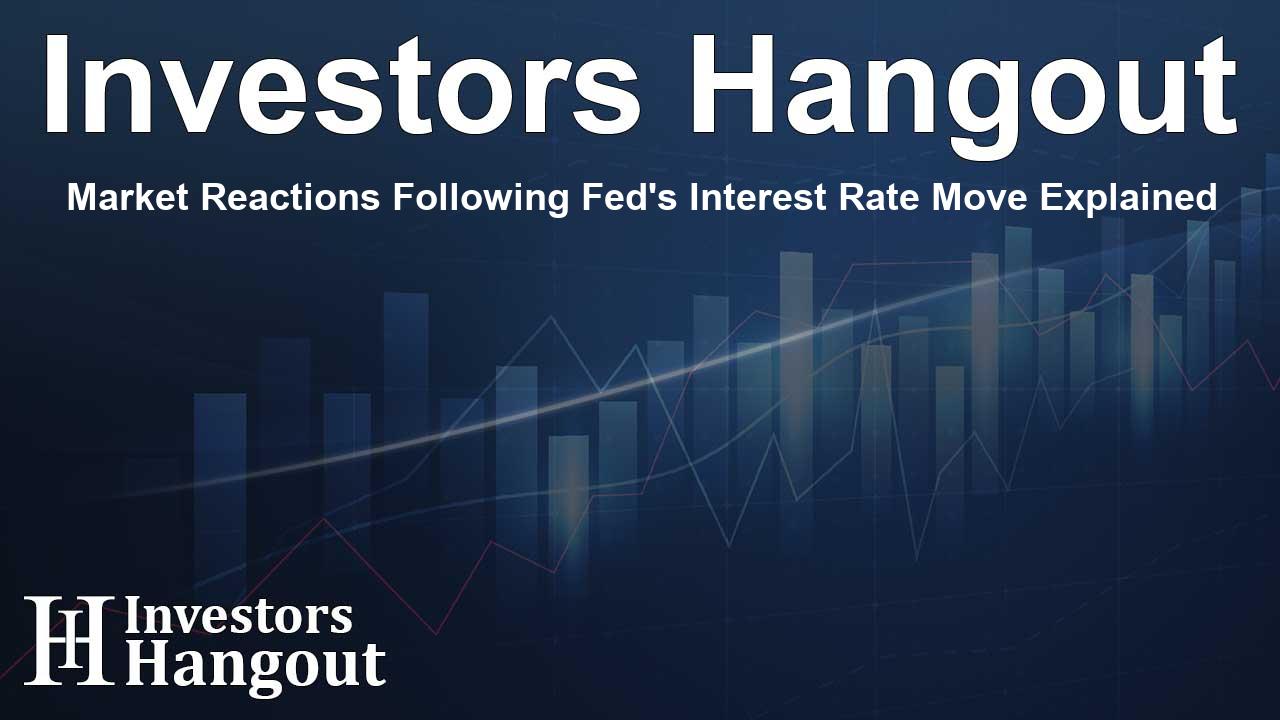Market Reactions Following Fed's Interest Rate Move Explained

Understanding the Impact of Recent Monetary Policy Changes
The recent announcement from Jerome Powell brought a wave of optimism among traders across the finance sector. The Fed's decision to implement a significant interest-rate cut aimed to stimulate the economy and was perceived as a pivotal move that could influence stock performance. The overarching sentiment was that the era of stringent monetary policy is taking a turn, allowing for a more favorable investment climate.
The Initial Market Surge
Almost immediately following the interest-rate cut, equities, particularly shares in sectors sensitive to economic conditions, witnessed a notable spike. For instance, the S&P 500 experienced gains as large as 1%, aided by an encouraging market environment fueled by the prospect of cheaper money. Additionally, speculative assets such as cryptocurrencies gained momentum, highlighting how traders reacted positively to the potential of improved financial conditions.
Investor Sentiment and Market Reactions
However, as the trading day progressed, a sobering realization set in. Despite the initial bounce in stock prices and the move towards more accessible loans, a sense of cautiousness loomed over many traders. The market began to register that even with a substantial interest-rate reduction, the complexities surrounding economic conditions and investments remained profound.
Concerns Amidst Gains
Many experts noted that the prevailing stock prices were already climbing to historic highs, making the context of this monetary shift increasingly delicate. Furthermore, the economy was showing signs of slowing, with analysts pointing out a potential mismatch in expectations regarding future interest rates and economic growth. Powell’s phrasing indicated that investors should calibrate their forecasts more conservatively as the economy transitions from the low-rate environment sought post-pandemic.
Emerging Trends in ??
After the Fed's announcement, there was a slight drop in bond and equity prices, a pattern not observed since June 2021. Even with a temporary boost in stock momentum, bond prices rallied initially but were unable to maintain those gains. This reaction reflects the dual nature of trader expectations: hope for growth amid uncertainties about the future trajectory of the financial landscape.
Markets Aligning with Policy Moves
Market observers, like Jeffrey Rosenberg from BlackRock, indicated that expectations had been drastically formed around aggressive policy initiatives. The immediate aftermath of the Fed's announcement saw fluctuations, particularly among two-year Treasury notes, which typically react sensitively to shifts in policy. Ultimately, the prevailing narrative was that traders may have overestimated the extent of the Fed's forthcoming rate cuts.
The Intersection of Labor and Economic Growth
Powell, during a press briefing, conveyed his confidence in the labor market's resilience, advocating for a belief in sustained moderate growth alongside successful inflation management. He reminded everyone not to presume that the half-point reduction marked the beginning of an accelerated cutting pace. Instead, the collective strategies would pivot based on incoming economic data.
Potential Future Directions for Policy
With traders now navigating an environment of uncertainty, discussions surrounding the Fed's path forward have intensified. Expectations for additional rate cuts linger, yet investors remain divided on interpreting the implications for future fiscal policy. A crossroad is emerging where the observations on employment data will heavily impact market movements and investor confidence.
Frequently Asked Questions
What is the significance of the recent interest-rate cut by the Fed?
The interest-rate cut aims to stimulate economic growth and encourage borrowing and investment, directly affecting stock market dynamics.
How did the market initially react to the Fed's announcement?
The S&P 500 experienced a brief surge, boosted by optimistic investor sentiment regarding cheaper money and potential economic growth.
Why did the market gains diminish later in the day?
As the day progressed, market participants shifted focus to underlying economic factors, leading to a pullback in overall asset values due to decreased optimism about sustained growth.
What concerns do traders have about future monetary policy?
Traders are apprehensive regarding inflation trends, potential limitations on further rate cuts, and overall economic performance projections.
How does labor market strength influence policy decisions?
The resilience of the labor market is a key indicator that can shape policymakers' decisions, particularly about adjusting interest rates to balance growth and inflation.
About The Author
Contact Ryan Hughes privately here. Or send an email with ATTN: Ryan Hughes as the subject to contact@investorshangout.com.
About Investors Hangout
Investors Hangout is a leading online stock forum for financial discussion and learning, offering a wide range of free tools and resources. It draws in traders of all levels, who exchange market knowledge, investigate trading tactics, and keep an eye on industry developments in real time. Featuring financial articles, stock message boards, quotes, charts, company profiles, and live news updates. Through cooperative learning and a wealth of informational resources, it helps users from novices creating their first portfolios to experts honing their techniques. Join Investors Hangout today: https://investorshangout.com/
The content of this article is based on factual, publicly available information and does not represent legal, financial, or investment advice. Investors Hangout does not offer financial advice, and the author is not a licensed financial advisor. Consult a qualified advisor before making any financial or investment decisions based on this article. This article should not be considered advice to purchase, sell, or hold any securities or other investments. If any of the material provided here is inaccurate, please contact us for corrections.
